Table of Content
Prime minister Narendra Modi will inaugurate the Ayodhya Ram Temple on January 22, 2024. During the pran-partisha (consecration) ceremony, the idol of Ram Lalla will be installed in the sanctum- sanctorum (garbha-griha) of the temple. Devotees on the other hand will be allowed entry to the grand temple from January 24.
Ayodhya Ram Mandir: Background
The Ayodhya Ram Temple, anticipated to be one of the largest temples constructed in India post-Independence, is projected to amalgamate modern technological conveniences with age-old Indian traditions.
Between 1528 and 1529, the Babri Masjid was constructed by the Mughal emperor Babur. However, the Hindu community also asserted their claim to the site, contending it to be the birthplace of Lord Ram. This led to the site becoming a disputed location, sparking a prolonged legal battle. The Supreme Court brought resolution to the title dispute on November 9, 2019, by recognizing the 2.77 acres of the contested area as the birthplace of Lord Ram. This decision paved the way for the construction of the Ram Mandir.
Ayodhya Ram Mandir foundation stone-laying ceremony
After the SC verdict, prime minister Narendra Modi performed the Bhumi Poojan ceremony on August 5, 2020, and laid the foundation stone of the temple.
Ayodhya Temple area and capacity
Encompassing an area of 54,700 square feet, the temple covers nearly 2.7 acres of land. The entire Ram Mandir Complex, spanning nearly 70 acres, is designed to accommodate approximately one million devotees simultaneously.
Ayodhya Ram Temple: Agency overseeing construction
The Shri Ram Janmabhoomi Teerth Kshetra Trust is supervising the temple’s construction.
Ayodhya Mandir: Estimated cost and funding
The construction work of the temple is likely to take between Rs 1,400 crore to Rs 1,800 crore. The temple trust is receiving between Rs 60-70 lakh in donations for building the grand temple, officials of the Ram Janmabhoomi Teerth Kshetra Nyas say.
Ayodhya Ram Mandir: Building material
Bansi Paharpur Sandstone
The structural framework of the Ram Mandir will be fashioned from carved Rajasthan Bansi Paharpur stone, a rare pink marble renowned globally for its beauty and strength. This will necessitate a total of 4 lakh sq ft of stone.
The Bansi Paharpur Sandstone is located in the Bayana Tehsil of Bharatpur District in Rajasthan and is available in shades of pink and red. In 2021, the central authorities granted provisional approval to convert 398 hectares of protected forest land into revenue land, permitting the mining of the pink sandstone near the Band Baretha Wildlife Sanctuary in Bharatpur. This decision reversed the mining ban imposed in 2016.
Bansi Pahadpur Sandstone has been utilized in various grand structures across the country, including the Akshardham Temple, the Parliament Complex, and the Lal Quila of Agra. Notably, the construction of the Ram Mandir will refrain from using steel or bricks.
Also Read: All about Lucknow-Ayodhya-Gorakhpur National Highway
Ayodhya Ram Mandir: Builders
While Larsen & Toubro are responsible for building the main structure, Tata Consultancy Engineers Ltd would develop the allied facilities.
Ayodhya Ram Mandir: Interior
Specifications
The upcoming temple is 360 ft long, 235 ft wide and 161 ft high. In height, the temple will three times the height of existing structure n the old city.
Style
The chief architect of the temple is Chandrakant Bhai Sompura, whose grandfather, Prabhakarji Sompura, co-designed the Somnath Temple with his son, Ashish Sompura. The 79-year-old architect assumed his role in 1992. Sompura has mentioned that the Ram Mandir is being constructed in the Nagara style, adhering to the principles of Vastu Shastra. The east entrance will be designed in the Gopuram style, representing the temples of the south. The temple walls will feature artworks depicting the life of Lord Ram.
Shape
The sanctorum of the mandir would be octagonal-shaped, while the structure perimeter would be circular.
Floors
The temple will feature five domes and one tower, standing at a height of 161 feet. The three-story structure will have a central section called Garbh Griha, designed to allow sunlight to illuminate the idol of Ram Lalla, the infant embodiment of the Lord. Similar to the sanctum, the Griha Mandap will be fully enclosed, while the Keertan Mandap, Nritya Mandap, Rang Mandap, and the two Prarthana Mandaps on each side will be open areas.
Ram Lalla idol
There will be two idols of Lord Ram. One will be the actual idol found in 1949 and has been in the tent for decades. The other will be a huge statue which will be visible from a long distance.
A dark-coloured idol of Lord Ram sculpted by Arun Yogiraj has been selected for installation at the sanctum- sanatorium (garbha griha) of the Ayodhya Ram Mandir, the trust overseeing the construction work said on January 15. According to Ram Janmabhoomi Teerth Kshetra Trust Secretary Champat Rai, 11 of the 15 members of the trust voted in favour of the idol made by Mysore-based artist Yogiraj.
“The idol made of Lord Shri Ram Lalla is in the form of a five-year-old child. The statue is 51 inches tall, made of black stone, and is very attractively made,” Rai told media. The idol will be placed at the ground floor of the three-storey temple, Rai added.
The temple bell
A 2,100-kg bell for the Ram Temple is being brought from Etah, a well-known destination for bell manufacturing in India. The 6-ft tall and 5-ft wide bell would cost Rs 21 lakh.
Doors and window
To build the windows and doors, Teak wood (Sagwan) has been procured from Maharashtra’s Chandrapur. Not an ordinary wood, Teak has a life span of over 100 years. Work on building the grand doors and windows is expected to start between June 26 and 30 after a ceremonial ritual.
Ayodhya Ram Mandir: Lifespan
The magnificent structure is being constructed with a projected lifespan of over 1,000 years. "Each material used, every design, and drawing are crafted at IIT Chennai. They take the lead in this process. Subsequently, the designs are tested by L&T and TCE. Finally, we subjected the stability test for this millennium-long agenda to the Central Research Building Institute (CRBI). The CRBI thoroughly examined the entire load that the structure would bear through simulations. In essence, we rely on the expertise of the best minds in the country. Our sole objective is to ensure the durability and uniqueness of the temple for 1,000 years," stated Nripendra Misra, Chairman of the Shri Ram Janmabhoomi Teerth Kshetra Trust's temple construction committee.
Number of pilgrims to Ayodhya Ram Mandir
Over 50,000 people visit the temple every day. This number is expected to increase to 100,000 once the temple is inaugurated.
Ayodhya Ram Mandir Darshan timing
| Day | Timing |
| Sunday | 7:00 AM to 11:30 AM
2:00 PM to 7:00 PM
|
| Monday | 7:00 AM to 11:30 AM
2:00 PM to 7:00 PM
|
| Tuesday | 7:00 AM to 11:30 AM
2:00 PM to 7:00 PM
|
| Wednesday | 7:00 AM to 11:30 AM
2:00 PM to 7:00 PM
|
| Thursday | 7:00 AM to 11:30 AM
2:00 PM to 7:00 PM
|
| Friday | 7:00 AM to 11:30 AM
2:00 PM to 7:00 PM
|
| Saturday | 7:00 AM to 11:30 AM
2:00 PM to 7:00 PM
|
Ayodhya Ram Mandir Morning Aarti (Shiringar Aarti) timing
| Day | Timing |
| Sunday | 6:30 AM |
| Monday | 6:30 AM |
| Tuesday | 6:30 AM |
| Wednesday | 6:30 AM
|
| Thursday | 6:30 AM |
| Friday | 6:30 AM |
| Saturday | 6:30 AM |
Ayodhya Ram Mandir Evening Aarti (Sandhya Aarti) timing
| Day | Timing |
| Sunday | 7:30 PM |
| Monday | 7:30 PM |
| Tuesday | 7:30 PM |
| Wednesday | 7:30 PM |
| Thursday | 7:30 PM |
| Friday | 7:30 PM |
| Saturday | 7:30 PM |
Ayodhya Ram Mandir: Timeline1528-1529: Mughal emperor Babur builds Babri Masjid 1850s: Start of communal violence over the land 1949: Ram Idol found inside the mosque, intensifying communal tension 1950: Two suits filed in Faizabad civil court seeking permission to worship the idol 1961: UP Sunni Central Wakf Board demands the removal of the idol 1986: District Court opens the site for Hindu worshippers 1992: Babri masjid demolished on December 6 2010: Allahabad HC rules three-way division of disputed area among Sunni Waqf Board, Nirmohi Akhara and Ram Lalla 2011: SC stays Allahabad HC order 2016: Subramanian Swamy files plea in SC, seeks the construction of Ram Temple 2019: SC accepts Ayodhya was the birthplace of Lord Ram, hands over the entire 2.77 acres of disputed land to the trust and orders the government to give 5-acre land to Sunni Waqf Board as an alternate site 2020: PM Modi performs Bhumi Poojan and lays the foundation stone |
How to reach Ayodhya?
By Air: You can book flights to the Ayodhya Airport from every major Indian city. The airport is conveniently connected to the city centre through the modes of taxi and auto rickshaws.
By Road: Ayodhya is well-connected by road to nearby cities and towns. You can hire a taxi or use public transportation like buses to reach Ayodhya from nearby locations. The airport is located approximately 8-10 km from the city centre.
By Train: The nearest major railway station to Ayodhya is the Ayodhya Junction. From there, you can take a taxi or an auto-rickshaw to reach Ayodhya Airport. The distance is around 6-8 km.
Ayodhya Ram Mandir: Impact on real estate
Land rates in and around Ayodhya have surged by up to 10 times over the past decade, according to information provided by property dealers and brokers active in the area.
"Lands that were purchased for lakhs in the city before the announcement of the temple construction suddenly became worth crores after the Supreme Court verdict. With significant developers expressing interest in properties here, rates have further escalated, bringing the city at par with the state capital, Lucknow, to say the least," noted Lal Babu Pandey, an Ayodhya resident who previously worked only part-time as a property dealer.
The heightened interest in land has transformed it into a full-time occupation for Pandey, providing sufficient support for his family.
For a buyer seeking a land parcel within a 5-10 km radius of the temple, the cost is at least Rs 2,000 per square foot, with rates potentially reaching as high as Rs 18,000 per square foot. Prices for commercial plots initiate at Rs 4,000 per square foot and can soar up to Rs 20,000 per square foot. In certain pockets, the rate for one biswa of land now exceeds Rs 60 lakh, compared to Rs 5 lakh in 2018.
Also Read: How are a temple and an airport changing Ayodhya’s real estate?
The Garbha-griha of Ayodhya Ram Mandir
View this post on Instagram
Also Read: Everything about Ayodhya's Sarayu, House of Abhinandan Lodha project
Night view of the Ayodhya Ram Mandir shared on January 8
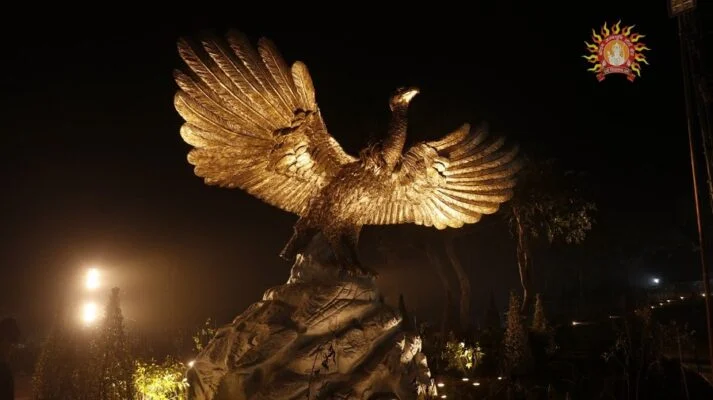

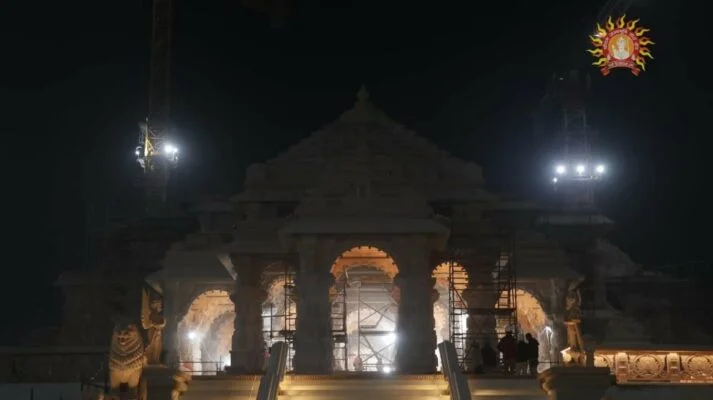

Latest photos of Ayodhya Ram Mandir

Golden doors installed at the Ram Templev- A total of fourteen such doors have been installed at the temple.

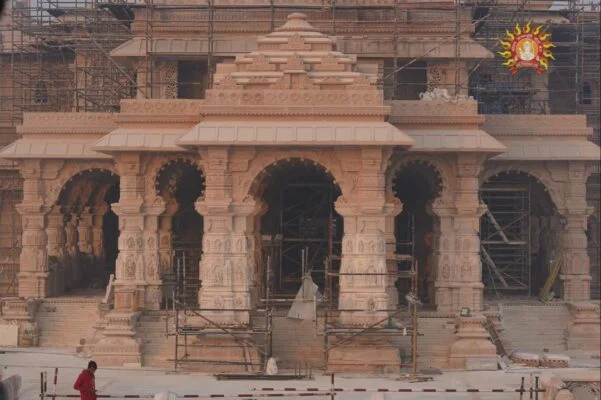
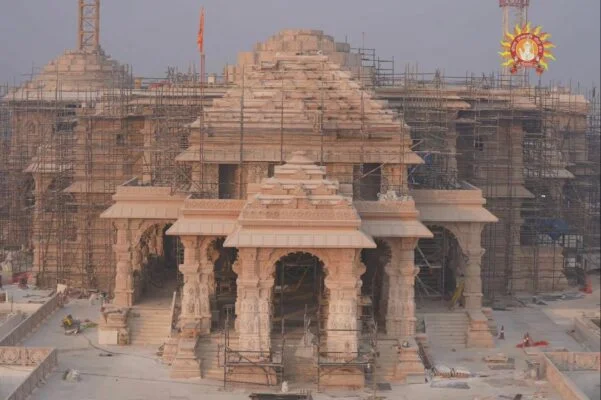
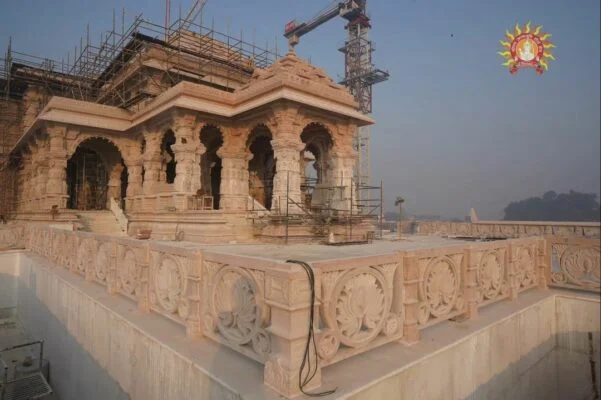
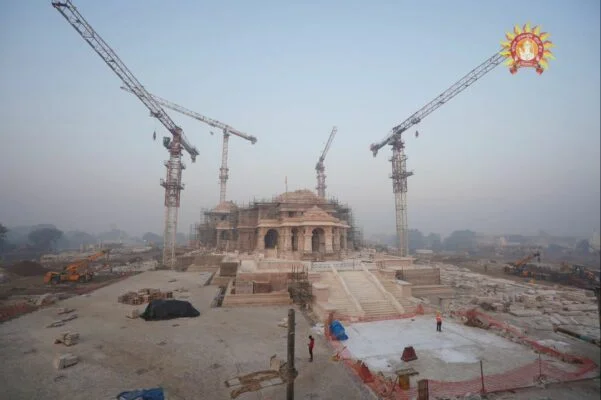



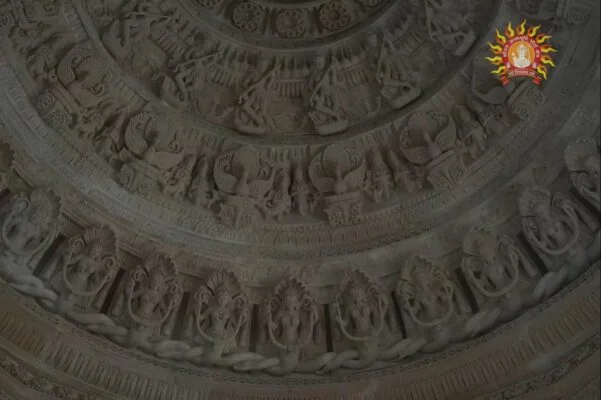
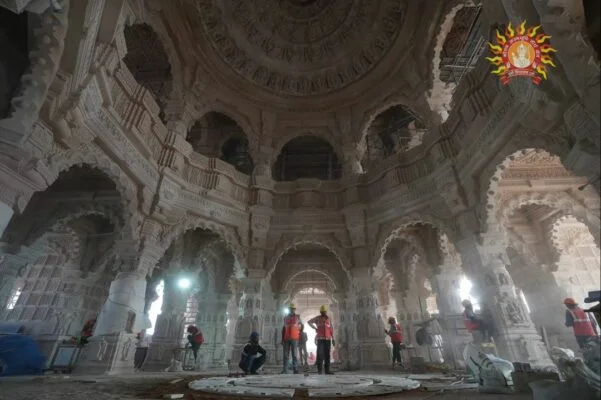



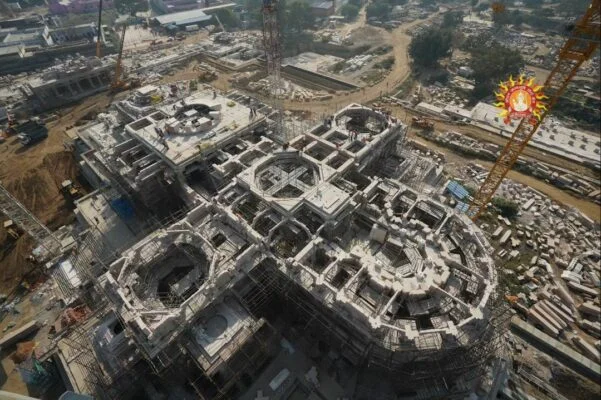
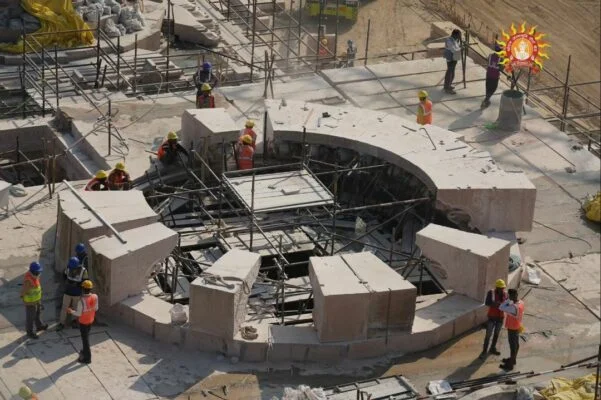


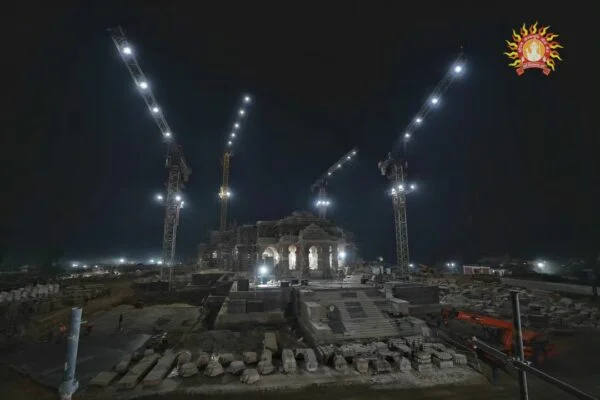
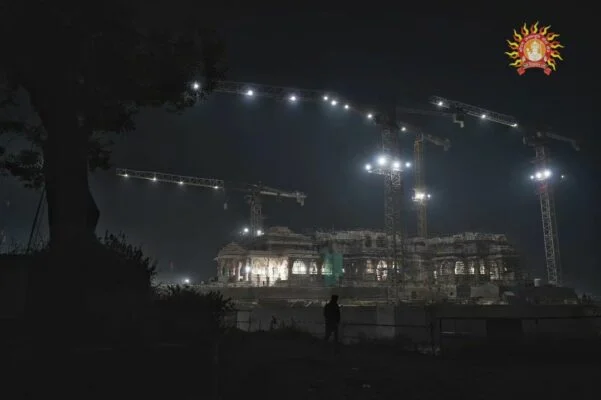
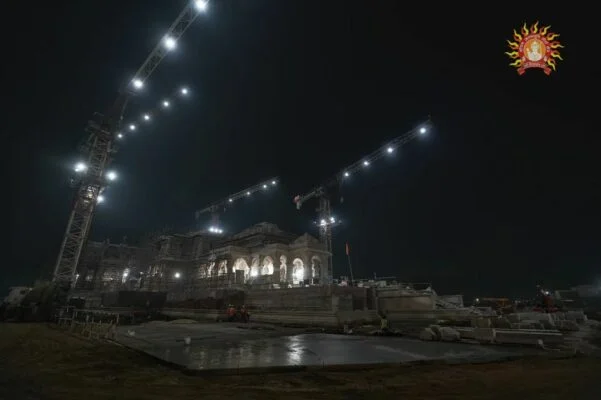
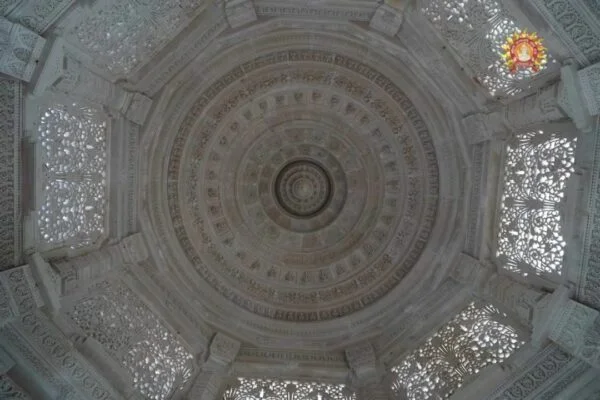
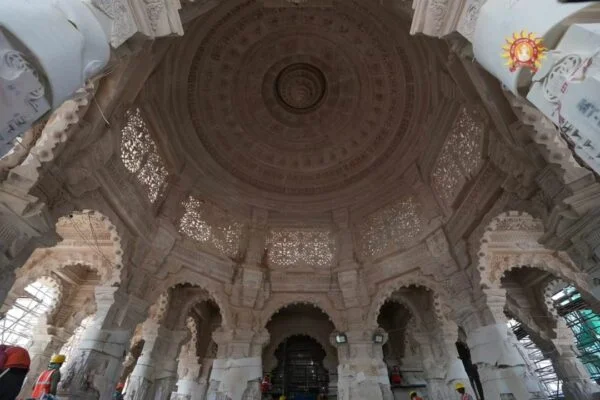
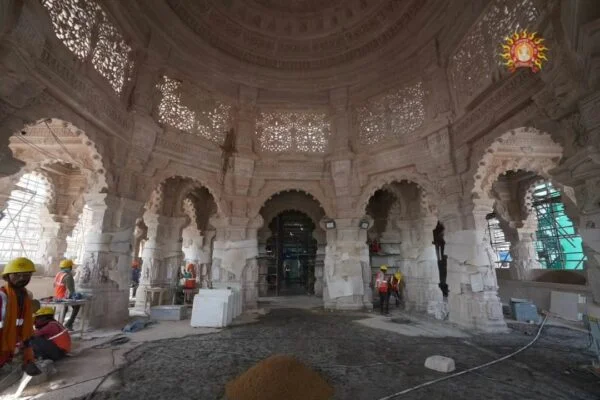
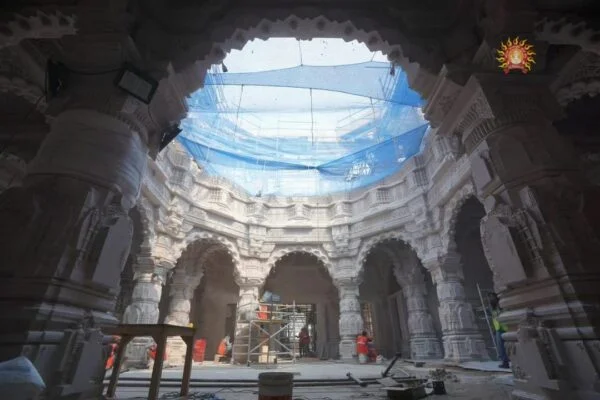

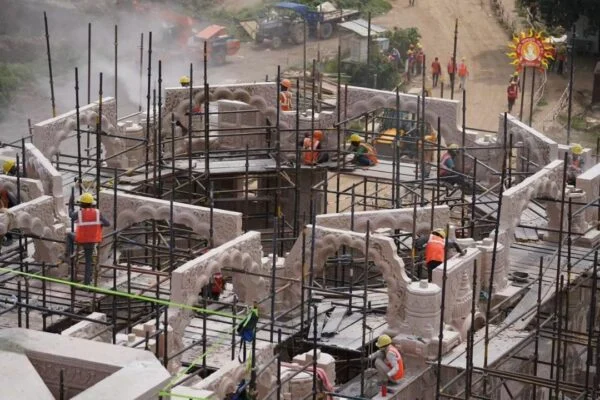
Views of Ram Mandir Sinh Dwar; carvings on Nritya Mandap
.webp)
.webp)
.webp)
Shri Ram Janmabhoomi Mandir Garbha Gruh Aarati Darshan
View this post on Instagram
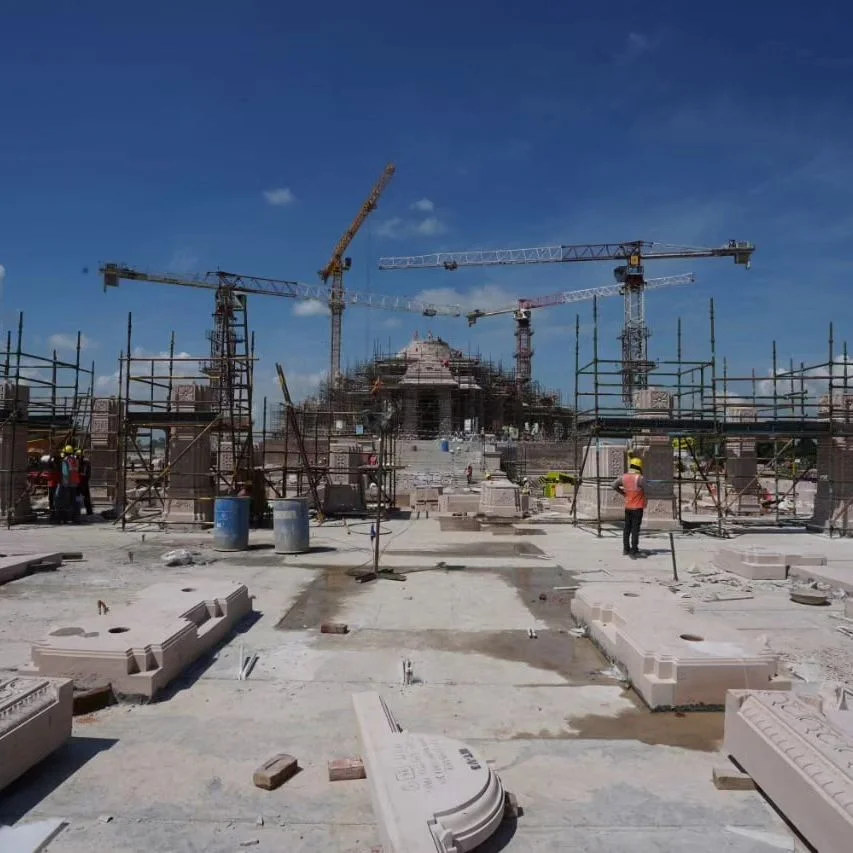
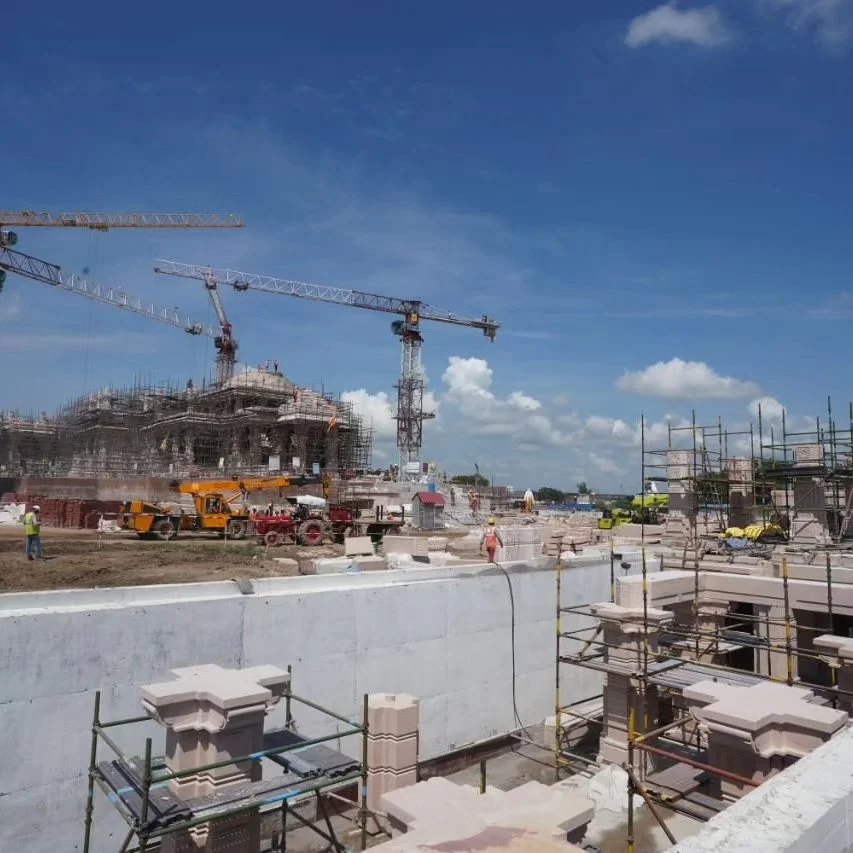
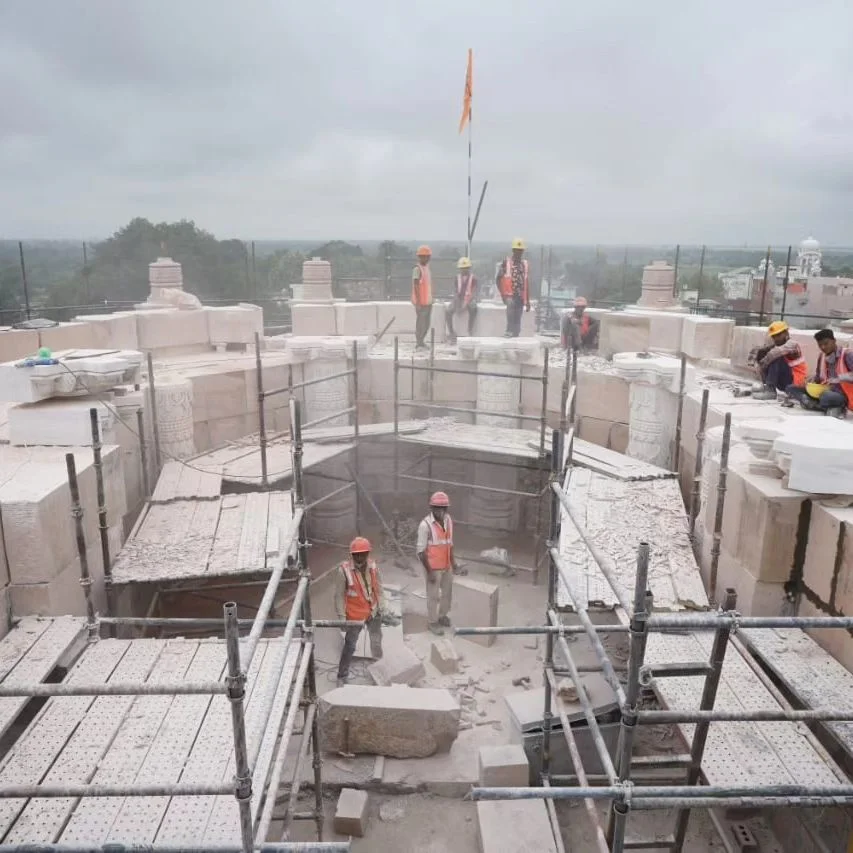

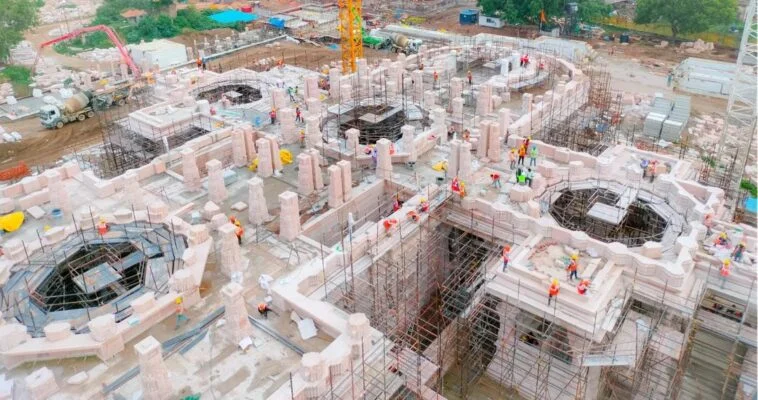
Also Read: Amitabh Bachchan buys plot in Ayodhya for ₹14.5 crore ahead of Ram Mandir ‘Pran Prathista’

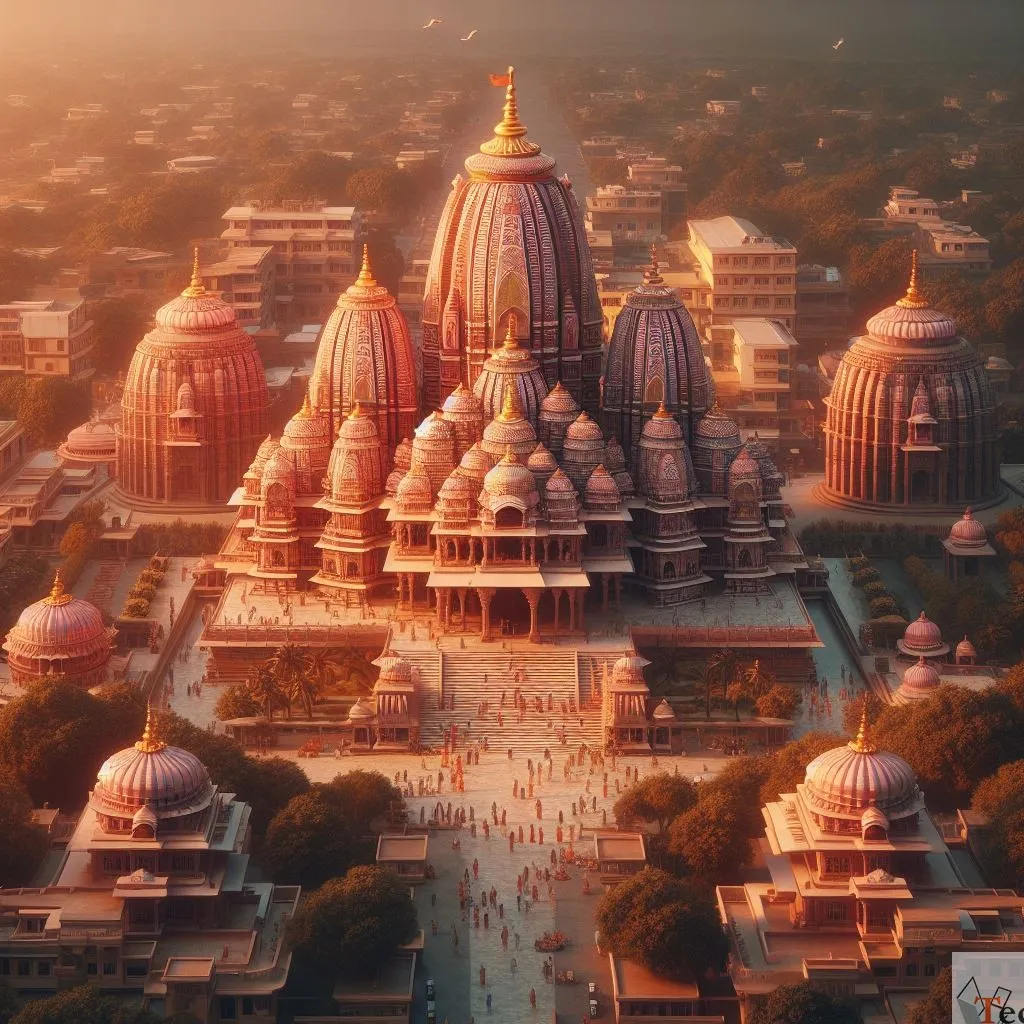

_1767769068.webp)






Ans 1. The Shri Ram Janmabhoomi Tirth Kshetra Trust is the owner of the Ram Mandir land.
Ans 2. L&T is building the Ram Mandir.
Ans 3. The temple is expected to be opened to devotees by December 2023.